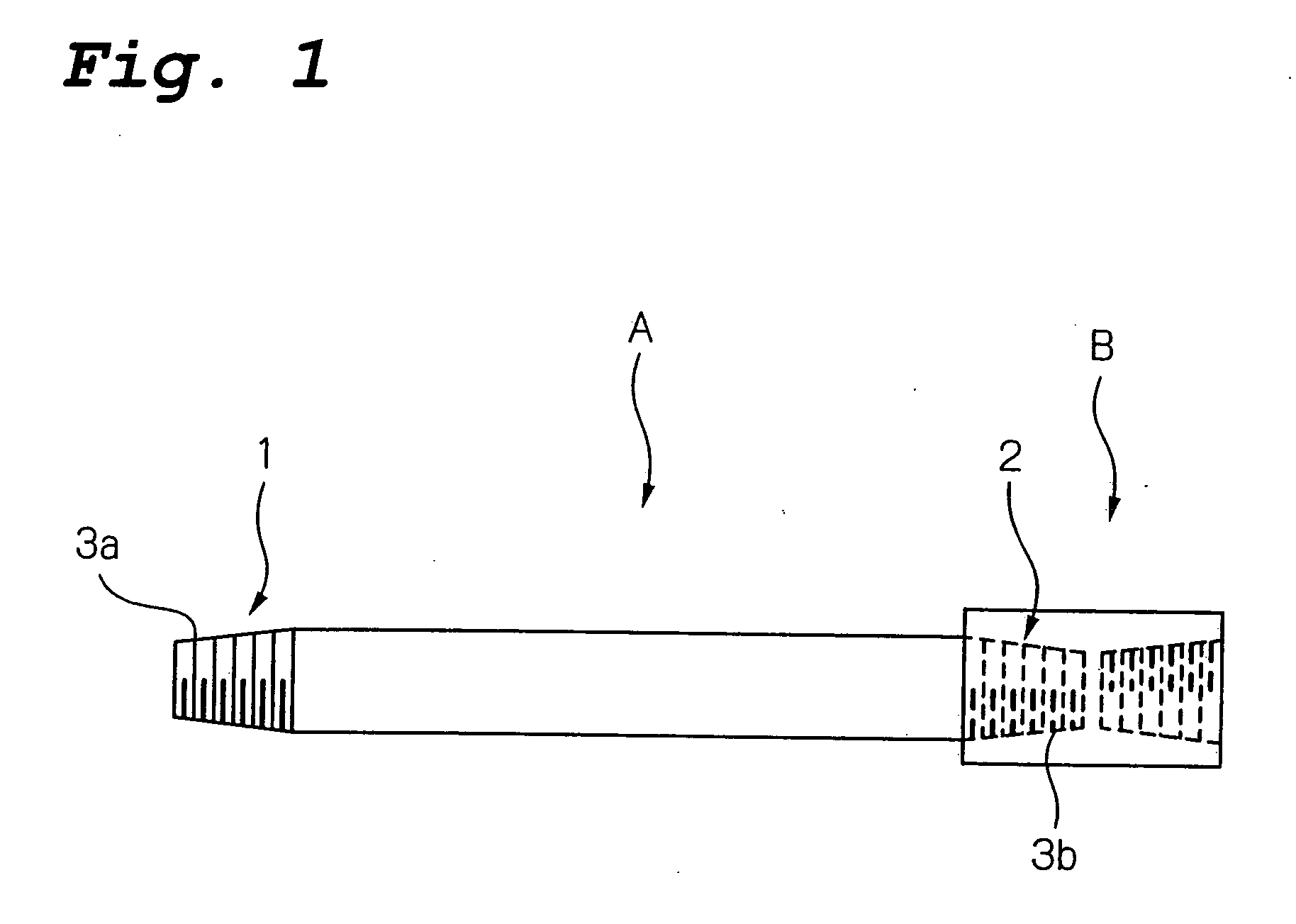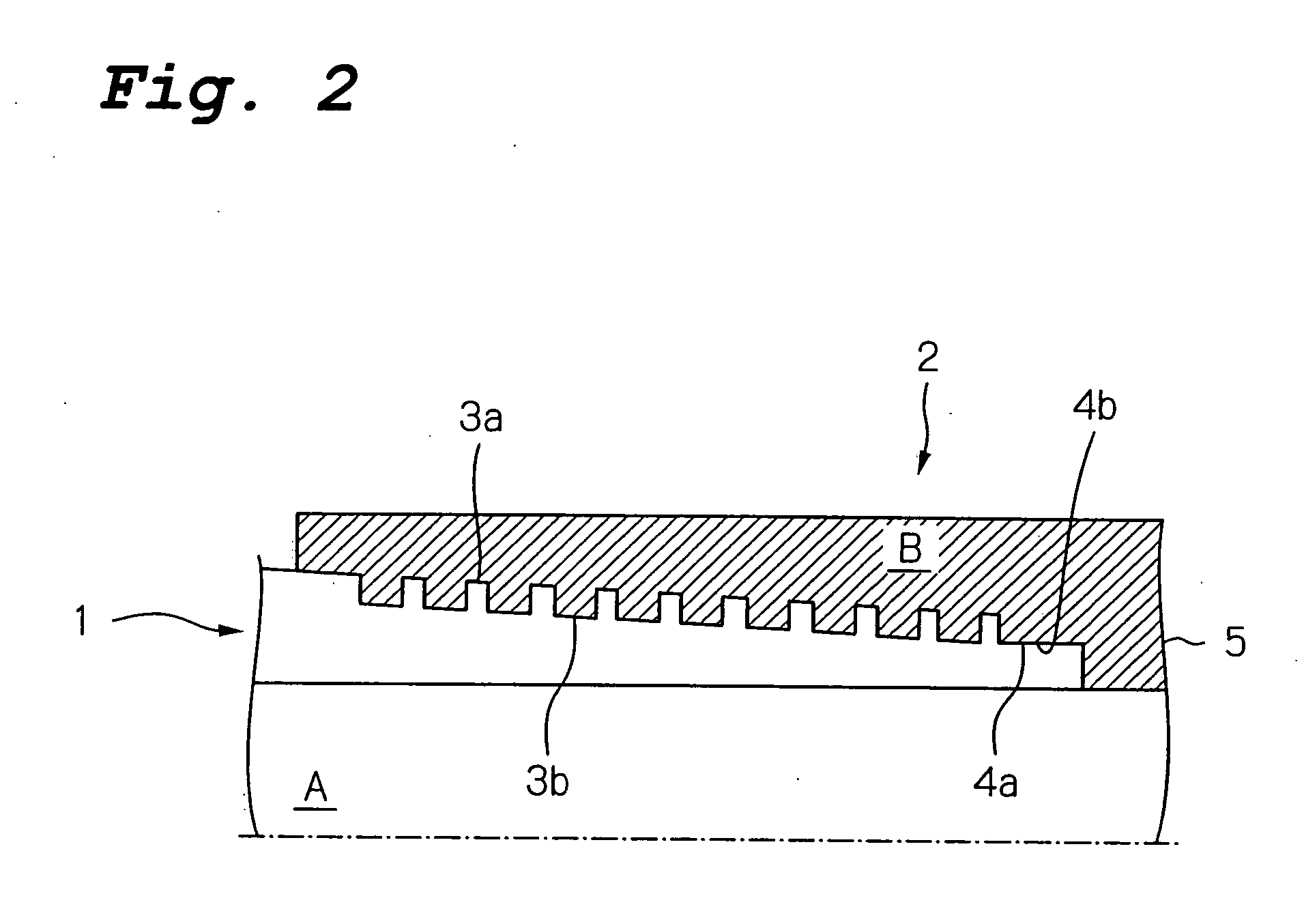Threaded joint for steel pipes
a threaded joint and steel pipe technology, applied in the direction of hose connection, screw threaded joint, mechanical apparatus, etc., can solve the problems of increasing the cost of steel pipe threaded joints, and increasing the adhesion. , the effect of increasing the galling resistan
- Summary
- Abstract
- Description
- Claims
- Application Information
AI Technical Summary
Benefits of technology
Problems solved by technology
Method used
Image
Examples
example 1
[0094] The pin and box surfaces of a carbon steel threaded joint having composition A shown in Table 1 were separately subjected to the following surface treatment.
[0095] The box surfaces which had been finished by machine grinding (surface roughness of 3 μm) were immersed for 10 minutes in a manganese phosphating solution (a manganese phosphate-type phosphating solution) at 80-95° C. for preparatory surface treatment to form a primary coating which was a manganese phosphate coating with a thickness of 15 μm. On the primary coating, a solid lubricating coating with a thickness of 30 μm was formed from an epoxy resin containing graphite powder with an average particle diameter of 10 μm and copper flaky powder with a maximum length of 15 μm. The mass ratio of graphite to epoxy resin (M in Table 2) in the solid lubricating coating was 0.6:1, and the mass ratio of copper powder to graphite (N in Table 2) therein was 0.2:1. A solid corrosion protective coating formed solely of an epoxy ...
example 2
[0097] The pin and box surfaces of a carbon steel threaded joint having composition A shown in Table 1 were separately subjected to surface treatment exactly in the same manner as described in Example 1.
[0098] Thus, the box surfaces had an innermost manganese phosphate coating, an intermediate solid lubricating coating containing graphite powder and copper powder in an epoxy resin, and an outermost solid corrosion protective coating of an epoxy resin. The pin surfaces had a lower zinc phosphate coating and an upper solid corrosion protective coating of an epoxy resin.
[0099] The box surfaces were exposed to the salt spray test. Upon observation of the box surfaces after the salt spray test for 100 hours, no change in the surface appearance was found. In the fastening and loosening test, as shown in Table 3, there was no occurrence of seizing or galling during 10 cycles of fastening and loosening, and the results were extremely good.
example 3
[0100] The pin and box surfaces of a threaded joint made of the Cr—Mo steel having composition B in Table 1 were separately subjected to the following surface treatment.
[0101] The box surfaces which had been finished by machine grinding (surface roughness of 3 μm) were subjected to pickling for preparatory surface treatment to obtain a surface roughness of 10 μm. On the box surfaces which had been treated in this manner, a solid lubricating coating with a thickness of 30 μm was formed from an epoxy resin containing molybdenum disulfide powder with an average particle diameter of 5 μm. The mass ratio M of molybdenum disulfide to epoxy resin in the solid lubricating coating was 0.7:1. A solid corrosion protective coating formed solely of epoxy resin was formed to a thickness of 20 μm atop this solid lubricating coating.
[0102] The pin surfaces which had been finished by machine grinding (surface roughness of 3 μm) were subjected to pickling for preparatory surface treatment to obtain...
PUM
 Login to View More
Login to View More Abstract
Description
Claims
Application Information
 Login to View More
Login to View More - R&D
- Intellectual Property
- Life Sciences
- Materials
- Tech Scout
- Unparalleled Data Quality
- Higher Quality Content
- 60% Fewer Hallucinations
Browse by: Latest US Patents, China's latest patents, Technical Efficacy Thesaurus, Application Domain, Technology Topic, Popular Technical Reports.
© 2025 PatSnap. All rights reserved.Legal|Privacy policy|Modern Slavery Act Transparency Statement|Sitemap|About US| Contact US: help@patsnap.com



